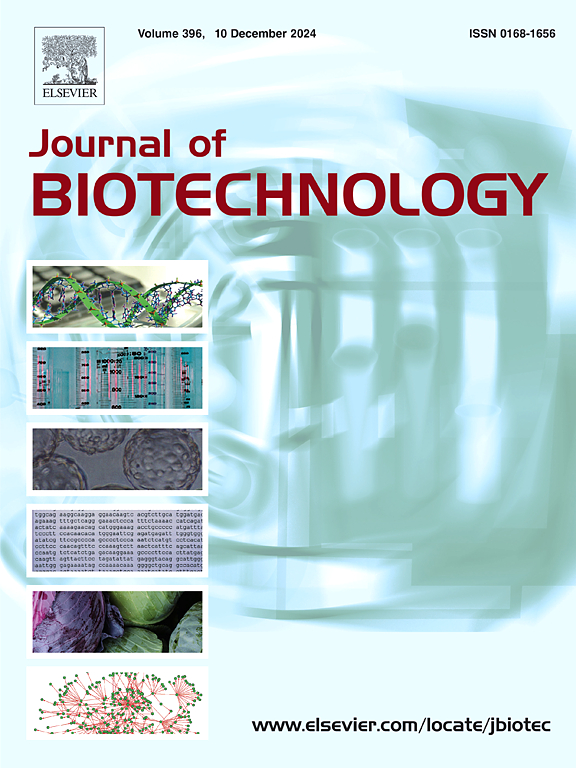3d打印丙烯腈-丁二烯-苯乙烯-聚乳酸载体微球固定化氧化葡萄糖杆菌的研究。
IF 3.9
2区 生物学
Q2 BIOTECHNOLOGY & APPLIED MICROBIOLOGY
引用次数: 0
摘要
生物过程在生物技术化合物的生产中起着至关重要的作用,3D打印提供了创新的解决方案,包括制造用于细胞固定的珠子。该技术能够开发具有各种几何形状和特性(形状、尺寸、孔隙度、密度和粗糙度)的定制结构。本研究采用两种不同的热塑性聚合物:丙烯腈-丁二烯-苯乙烯(ABS)和聚乳酸(PLA)熔丝制备载体珠。载体珠被打印成三种不同的毫孔几何形状——六边形、正方形和三角形——以评估氧化葡萄糖杆菌的固定化效率,并研究基于材料类型和毫孔几何形状的固定化变化。与PLA相比,ABS具有更高的表面粗糙度,从而增强了细胞的固定化。ABS微珠的细胞固定效率最高,六边形微孔结构的效率最高,达到84.7%。确定机械参数,包括储存和损失模量,对于确保珠在工业过程中的耐久性至关重要。ABS和PLA的玻璃化转变温度分别为105℃和60 ~ 65℃。因此,3D打印因其在材料选择和几何形状方面的多功能性而脱颖而出,优化了生物过程的性能。本文章由计算机程序翻译,如有差异,请以英文原文为准。
Characterization of 3D-printed acrylonitrile butadiene styrene and polylactic acid carrier-beads for Gluconobacter oxydans immobilization
Bioprocesses play a crucial role in the production of biotechnological compounds, and 3D printing offers innovative solutions, including the creation of beads for cell immobilization. This technology enables the development of customized structures with various geometries and properties (shape, size, porosity, density, and roughness). This study produced carrier beads using fused filament fabrication with two different thermopolymers: acrylonitrile butadiene styrene (ABS) and polylactic acid (PLA). The carrier beads were printed with three distinct millipore geometries—hexagonal, square, and triangular—to evaluate immobilizing Gluconobacter oxydans' efficiency and investigate how immobilization varies based on the material type and millipore geometry. ABS exhibited greater surface roughness compared to PLA, which enhanced cell immobilization. The highest cell immobilization efficiencies were achieved with the ABS beads, with the hexagonal millipore geometry demonstrating the best efficiency at 84.7 %. Determining mechanical parameters, including storage and loss modulus, is essential for ensuring the durability of the beads in industrial processes. The glass transition temperatures for ABS and PLA were found to be 105 °C and 60 °C to 65 °C, respectively. Thus, 3D printing stands out for its versatility in material selection and geometry, optimizing the performance of bioprocesses.
求助全文
通过发布文献求助,成功后即可免费获取论文全文。
去求助
来源期刊

Journal of biotechnology
工程技术-生物工程与应用微生物
CiteScore
8.90
自引率
2.40%
发文量
190
审稿时长
45 days
期刊介绍:
The Journal of Biotechnology has an open access mirror journal, the Journal of Biotechnology: X, sharing the same aims and scope, editorial team, submission system and rigorous peer review.
The Journal provides a medium for the rapid publication of both full-length articles and short communications on novel and innovative aspects of biotechnology. The Journal will accept papers ranging from genetic or molecular biological positions to those covering biochemical, chemical or bioprocess engineering aspects as well as computer application of new software concepts, provided that in each case the material is directly relevant to biotechnological systems. Papers presenting information of a multidisciplinary nature that would not be suitable for publication in a journal devoted to a single discipline, are particularly welcome.
 求助内容:
求助内容: 应助结果提醒方式:
应助结果提醒方式:


